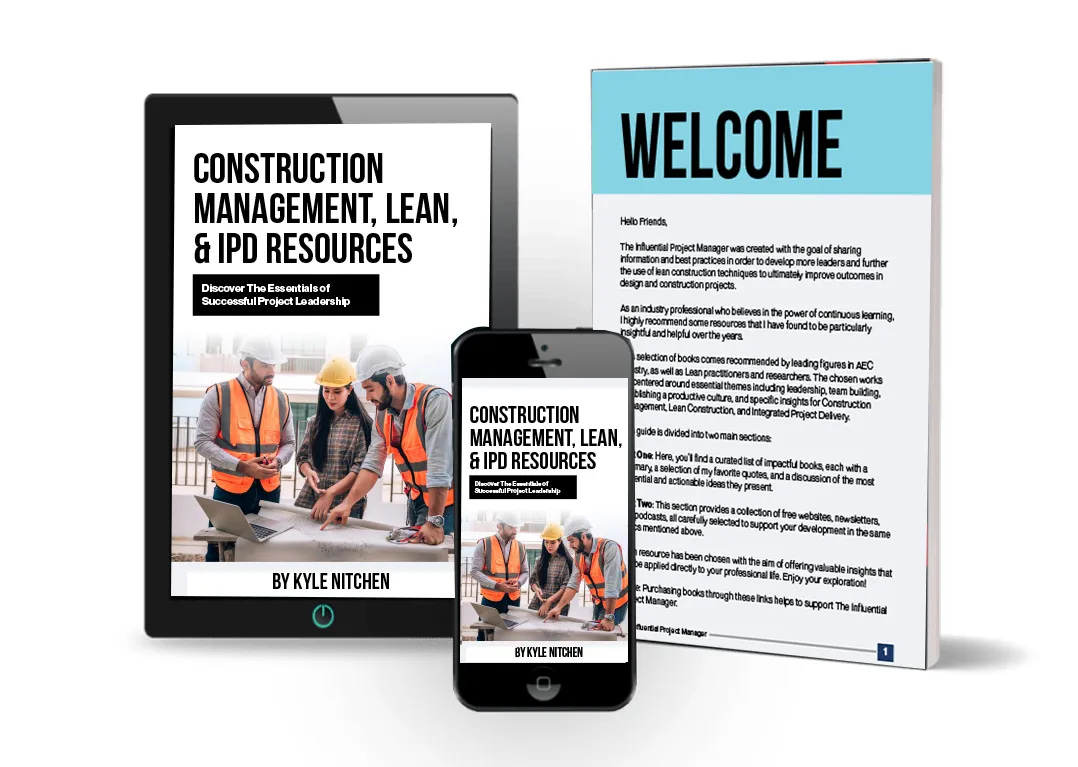How to Manage an Underperforming Trade Partner
It’s frustrating, time-consuming, and it can demoralize the other people on your team.
But what do you do about an trade partner on your site who isn’t performing up to snuff? How do you help turn around the problematic behavior? And how long do you let it go on before you cut your losses?
We are responsible for ensuring that every aspect of your project runs smoothly and according to plan. In other words, we’re in the business of providing a predictable outcome.
You must have a crew you can depend on to complete a project safely, to quality standards, and on time.
When a trade partner doesn’t perform according to the terms of its contract, it can often turn a general contractor’s or owner’s experience of a great project from dream to nightmare. They cost money, damage relationships, negatively affect your company’s reputation, and even invite legal trouble.
It’s up to the project’s leadership to recognize when a subcontractor is out of control and then to take steps to fix the problem.
This week’s article aims to arm you with a strategic framework to get your trade partners performance back on track, without resorting to legal action.
🚫 Termination is Messy

Replace the subcontractor, or
Work towards changing their current behavior.
While it’s sometimes necessary to fire a subcontractor, it’s not an ideal solution for a number of reasons. In fact, this should be your last option.
“Termination is a messy process. You should strive to work it out with your sub rather than escalate problems to the point where termination and replacement is the only viable option.” - Zach Jones, Managing Member at Jones Law
Termination can often invite a legal tangle that is more trouble than it is worth. Not to mention, change is difficult and can cause disruptions and other hidden costs.
Therefore, our recommended initial approach is to collaborate with your current trade partner and use a systematic approach to changing their behavior when you start to see the warning signs of underperformance.
Change Their Behavior (A.L.E.R.T.S.)
A.L.E.R.T.S.
Anticipate
Lookout
Extract
Root Cause Analysis
Talk
Strategize
Let’s review each component and learn how to stage a productive intervention.
Anticipate: Setting Clear Expectations
Start with clear expectations from the get-go.
Define desired outcomes concerning Cost, Quantity, Quality, Time, Safety, and General Behavior and communicate them to your trade partners from the start.
Make sure these performance expectations or intended lean practices are discussed even before the contract signing to avoid surprises later on.
It is not fair to suddenly spring a performance expectation on a subcontractor if that is the first they are hearing about it.
Lookout: Identify Early Signs of Trouble
Vigilance is key. After you have defined and clearly communicated expectations, it’s time to be on the lookout.
Watch for early signs of underperformance, such as:
Delayed deliveries
Missing deadlines
Poor time management
Failure to pay suppliers
Lack of communication
Rapid employee turnover
Making things less clear or harder to understand
An unreasonable or increasing list of punch items
Failure to correct issues in a timely manner, or at all
Regular performance assessments will allow contractors to recognize the warning signs of declining trade partner performance before the situation begins to affect the entire project.
It’s best to also study the timeline and milestone projection of the project so that these sync with the performance assessments.
Extract: Address Issues Promptly
By now you and your team have started to notice some early warning signs of under-performance.
Don’t ignore the problem! To often these signs go unaddressed which leads to worsening issues.
Upon observing any warning signs, document the results from a representative sample of the completed work and pinpoint specific issues.
Engage in a constructive discussion about these issues, focusing on documentation and fact-based communication, rather than assigning blame. Keeping the conversation professional and solution-oriented is essential.
Begin with a phone call, and follow up with an email outlining your observations. Here’s an example:
"Dear Trade Partner/Vendor,
As you know, it is crucial for us to maintain the highest standards of quality and reliability in all aspects of our projects. However, the first phase of this project has been a bit rough.
The original duration for this phase was 3 days per our contract schedule. Through LPS coordination this duration was extended to 5 days giving you the week of 5-15-23 through 5-19-23. The entire space was cleared out prior to your arrival. Temporary power for your equipment was provided per your specifications as a courtesy from our electrical contractor. Here is how that week played out:
Monday 5/15 – Required insurance documents were not provided on time and your crew was unable to mobilize.
Tuesday 5/16 – Bead Blasting equipment was not functioning properly. Most of the day was spent troubleshooting and hunting down parts. Late that afternoon, you requested a larger breaker be provided for new equipment that would be rented the following day.
Wednesday 5/17 – The electrical contractor was able to purchase the required breaker and have it installed prior to the arrival of the new equipment. However, the equipment that was rented would not run on the provided power. Your crew was able to fix the original blaster, but since the blasting was not started until mid-day, the crew worked until 8pm. Our staff worked late to accommodate.
Thursday 5/18 – Manpower was reduced. Patching material was applied over the moisture barrier. The crew worked another late day leaving at 6pm. Our staff worked late to accommodate.
Friday 5/19 – The crew was allowed to start early (5am, our staff came in early to accommodate) and worked 12hrs leaving at 5pm. The flooring was laid out, but no seams were prepped or welded.
Yesterday 5/22, the manpower was reduced to 2 guys. The seam welding was not completed as promised, and our schedule has pushed two days.
In addition, your crew has not made any of our mandatory morning huddles in the 7 days they have been on site. I have also received an email from my safety manager for missing attachments on 3 PTP’s. Please make sure your crew make the huddle every day at 6:45am, completes a hot work permit when required, and verifies the PTP’s have an attachment.
While I appreciate you working overtime to make up for the first couple of days, moving forward I need to see more effort on your end to perform as promised. I will set up the work to facilitate production on your end, but I need your help to follow the site protocols and make your commitments.
Respectfully,
Contractor"
Root Cause Analysis: Identify Underlying Problems
Look at the bigger picture and consider what’s causing the problem.
First, look in the mirror. Evaluate whether communication breakdowns or unfulfilled commitments on your end might be contributing to the problem. When you’re sure you’re not part of the issue, dive into analyzing the root cause.
Is their leadership a poor fit for the job?
Do they lack the necessary skills?
Or are they just misunderstanding expectations?
There is very often a mismatch between what general contractors and subcontractors think is important when it comes to performance. Approach problem-solving collaboratively, understanding that their success is your success.
Talk: Constructive Dialogues
At this point, I would escalate the situation by requesting a job site walk-through with the company's owner or most accountable executive. This face-to-face meeting allows me to discuss the root cause and directly showcase my concerns.
Choose collaboration over confrontation, and ensure you’re consulting with the right stakeholder.
Principles to Remember:
✅ Do:
Take action as soon as possible — the sooner you intervene the better.
Consider how you might be contributing to the performance issues.
Engage in direct communication, ideally face-to-face.
Express appreciation and highlight positives.
Offer support and assistance.
Develop an actionable plan together.
🚫 Don’t:
Forget to follow up — monitor their progress regularly.
Withhold payment without warning.
Refuse to take calls.
Threaten legal action.
Demand refunds for money already paid.
Demand work not already stated in the contract.
When in doubt, communicate and work it out.
Strategize: Co-create a Corrective Action Plan
Assuming improvement remains elusive, it is time to assist your trade partner in devising a precise and measurable corrective action plan.
Create a checklist or checklists that include the main issues as checkpoints.
Provide the checklists to your trade partner and review the items to make sure all items are understood.
Assist your trade partner in organizing on-site meetings and toolbox talks.
Focus training on important project details and common oversight areas.
Volunteer to be a guest presenter if it will provide additional value and insight.
Require subcontractor self-inspections—give your sub the chance to correct its own mistakes or oversights first.
Throughout the trade partner’s phase of work, you should be in helping and teaching mode to help ensure first-time quality work.
Congratulations!

Together with the stakeholders, you've identified root causes and co-created a corrective action plan.
In almost all cases, performance typically improves significantly by this stage.
Praise and reward positive change. If the trade partner makes positive changes, let them know. Make it clear that you’re noticing the developments and reward them accordingly.
Know When It’s Time To Part Ways
This might become the case when a subcontractor disappears from the worksite, leaves with equipment, or refuses to address safety code violations.
However, termination should always be the last resort and executed according to contract stipulations to avoid legal complications. Some contracts demand certified letters, advance notice, or other details.
To further protect yourself and your company from legal action, always keep records of communication, commitments, and meeting minutes.
Final Thoughts
A.L.E.R.T.S:
Anticipate: Set Clear Expectations
Lookout: Identify Early Signs of Trouble
Extract: Address Issues Promptly
Root Cause Analysis: Identify Underlying Problems
Talk: Constructive Dialogues
Strategize: Co-create a Corrective Action Plan
Employing a systematic approach to monitor and assess subcontractor performance will help both you and your subcontractors become more successful.
In the long run, having an efficient, reliable subcontractor base will be your competitive advantage.
Until next week,
Kyle Nitchen
Influential Ideas
🎧 Podcast Appearance: Construction Genius Podcast

We dove deep into the 7 essential archetypes every Project Manager should master. From communication, accountability, to leadership, these insights come from real-world experiences and are meant to drive tangible results. I'd love if you took a moment to listen in.
Listen to the episode here: Apple | Spotify | YouTube
Thanks for reading! Want to work together?
Whenever you're ready, there are 3 ways I can help you:
📣 Sponsorships: Want to put your brand in front of construction project managers, leaders, and execs?
The Influential Project Manager is a digital publication reaching over 2,000 industry professionals and decision makers. Our readers rely on our free weekly newsletter to deliver valuable insights on effective project leadership and important industry updates.
☎ 1-on-1 Coaching
Are you interested in diving deeper into a particular topic or strategy? Book time with me for a 1:1 coaching or strategy session.
🎙 Interviews & Public Speaking
I’m available for podcast guest appearances and speaking engagements, focusing on leadership, construction project management, and continuous improvement. Interested in having me on your show or event? Let’s connect.
📧 Support My Newsletter
The Influential Project Manager articles will remain free, but if you find this work valuable, I encourage you to become a paid subscriber. As a paid subscriber, you’ll help support this work.
🎁 Refer Friends, Earn Rewards!
You're just 3 referrals away from unlocking my Construction Management, Lean, & IPD Resources ebook!

